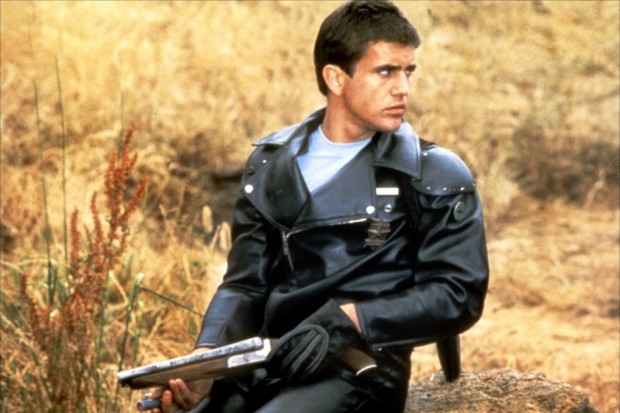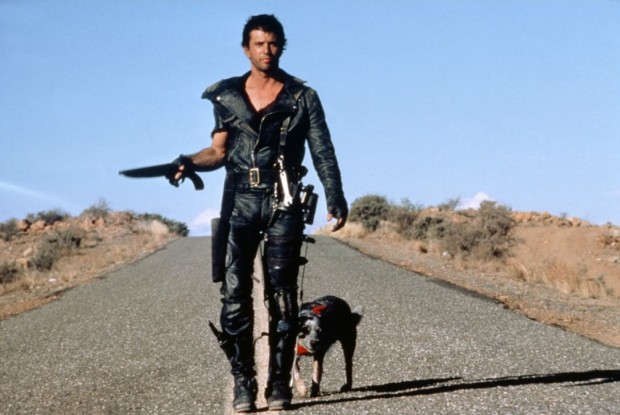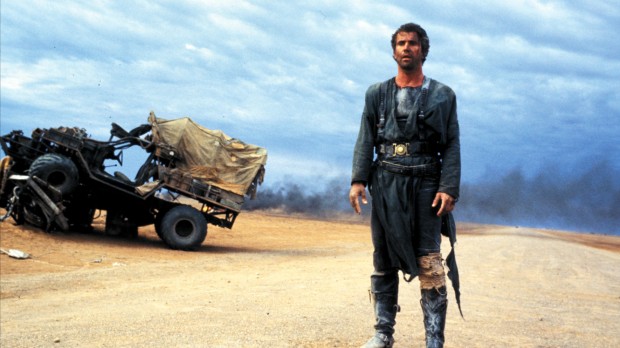You have no items in your cart. Want to get some nice things?
Go shoppingGreetings from the Humungus.

There is a particular brand of dystopian drama that defines itself by a punk aesthetic built around leather, chains and shock hair dye. Any sci-fi fan will recognise that description – be it the neon-drenched cyberpunk Replicants of Ridley Scott’s Blade Runner or the murky, madcap world of 2009 videogame Borderlands, there is an unmistakeable look from which the sub-genre struggles to break away. Well, it all began with Mad Max: The Road Warrior.
Recent trailers for the upcoming Mad Max: Fury Road have highlighted the input of “visionary” director George Miller. For once, the marketing minds have got it right. It is a simple statement of fact. The man is a genius and his career-defining franchise was far ahead of its time. The first entry, Mad Max (1979), remains a taught, gripping revenge thriller set in a post-Apocalyptic Australia. Its sequel, Mad Max: The Road Warrior (1981), is the pinnacle of vehicular mayhem on film and the essence of what sci-fi cinema does well: big ideas transmitted through convincing characters and breathtaking spectacle.
In the lattermost case, it is quite literally breathtaking. The pacing and intensity of The Road Warrior is so relentless you will find yourself struggling to even gasp, especially during that never-bettered final tanker chase. The Fast & Furious franchise holds no candle to the carnage marshalled by Miller.

Then there is that glorious design. Personally, I have always disliked the punk-dystopia aesthetic; it is too easily dated and does not represent humanity as a whole, which in my mind is the purpose of futuristic sci-fi. Also, I have always hated that one-bare-arm-with-a-pointless-piece-of-shoulder-armour look. It is ubiquitous these days and especially abused in animé, comics and videogames. However, in Mad Max it simply works. The look that spawned a thousand rip-offs was born here. The Road Warrior is iconic and timeless even though it is patently ’80s. Perhaps it works because there is a logic and consistency behind it – the outfits in the Mad Max universe are not designed, they appear assembled, just as would be the case in a real post-Apocalypse world. Or maybe it works because everyone portrayed in these films is as mad as Max, so the ridiculous costumes make a peculiar kind of sense. Whatever the reason, I can revisit the Mad Max films time and again and marvel at their inspiring visuals.
However, there is a lot more to Miller’s masterpiece than pulse-pumping action and dazzling stunts. It also boasts a brilliant sense of character, letting each speak through their deeds instead of their words. The script is still eloquent and intelligent, but it is sparing. There are no self-indulgent Tarantino-esque monologues and no clumsy, gung-ho catchphrases that are so common to the genre. The undeniable stand-out is, of course, Max Rockatansky himself – incomparably played with smouldering gusto by Mel Gibson, back when he was an exciting new talent, beautiful and unblemished in the public eye. The simple truth is that he is a great actor and the perfect choice for Mad Max – even if, as his success in the Lethal Weapon franchise also attests, it is because Gibson himself is mad and therefore suited to insane characters.

There is a third Mad Max film, Beyond Thunderdome (1985). It it is very good, but studio requirements did not recreate the same magic. Thirty years later, George Miller is back at the helm directing Tom Hardy in Gibson’s shoes – another two films will grace our silver screens in the coming years. However good they are, I suspect nothing can take The Road Warrior‘s place as king of its genre. It has stood the test of time remarkably well. It still grips. It still excites. It still enthrals. Moreover, it still convinces. Far from the uncanny valley of modern movies’ dependence on CGI and with one of the most refreshing concepts and executions you will ever see, The Road Warrior is simply too original to be overshadowed. That is not bad for a sequel.
This article is part of Litro’s Future Fashions series. The BFI will be showing Mad Max: The Road Warrior as part of their Sci-Fi: Days of Fear and Wonder season from 20th October to 31st December 2014.
About Thomas Greylees
Thomas is a specialist in medieval religions and a part-time author. His enthusiasm for films is second only to his love for cats and long-forgotten saints. You can find his stories and articles published in H-Y journals and online.





One comment